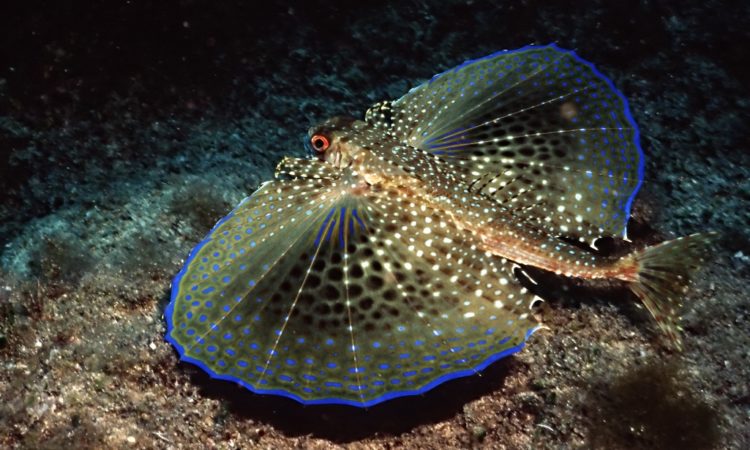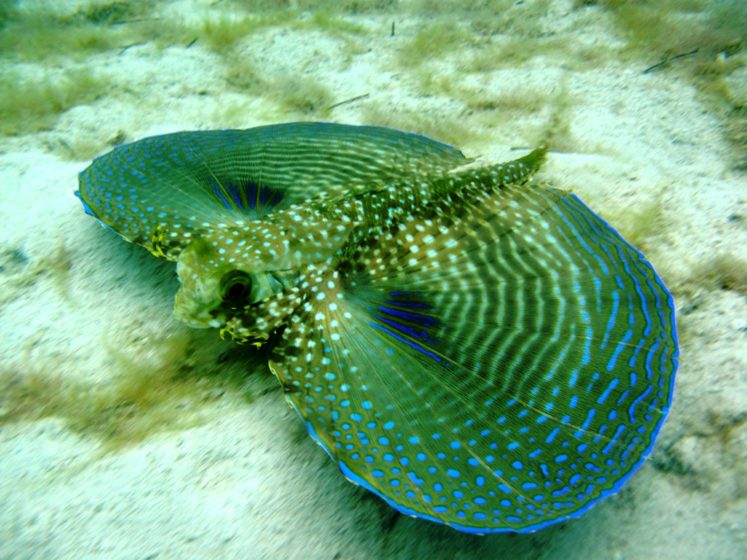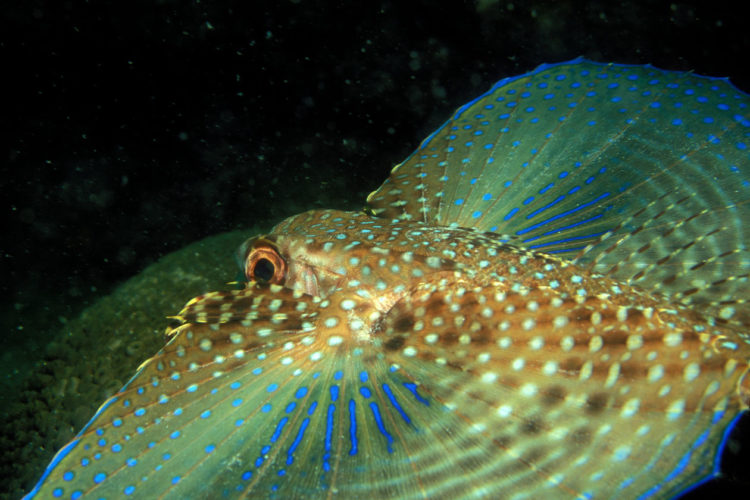The Flying Gurnard Fish (Dactylopterus volitans), is a bottom-dwelling fish of tropical to warm temperate waters on both sides of the Atlantic Ocean. Although, on the American side, it is found as far north as Massachusetts especially as far as Canada, and south as Argentina, including the Caribbean and Gulf of Mexico. On the European and African sides, it ranges from the English Channel to Angola, including the Mediterranean.
“The Flying Gurnard Fish built-in general on the sea robin plan is remarkable for its enormous pectorals”
It is also known as the helmet gurnard. Similar species from the genus Dactyloptena are found in the Indian and Pacific Oceans. The fish is very dazzling, erratic widely in color. So most of them are in the shade of brownish to greenish olive, with the lower side paler. Nonetheless marked erratically with reddish salmon or salmon yellow.
Thus, the pectorals are numerously marked with bright blue streaks near their bases, with blue spots and bars toward their tips. However, the caudal fin typically has about three brownish-red cross bars. Moreover, when the fish is excited, he spreads its fanlike wings which are beautiful semi-transparent, with a phosphorescent bright blue coloration at their tips.
These are naturally designed to scare away predators. But they don’t help the fish to glide in the air as do the fins of flying fish. The flying gurnard has large eyes and fish reaches up to 50 cm in length and 1.8 kg in weight. The fish’s main diet consists of small fish, inverts, bivalves, crustaceans, crab, shrimp, and shells.
In-tank, Flying Gurnard Fish is a good scavenger and can help keep the tank bottom cleaned. Therefore, this is a fascinating fish to keep, beautiful, entertaining, and easy to care for. Though this fish can grow to a large size, it should only be kept if you have a big aquarium to give it the room it needs.
Also Read:
- The Ancient Saqqara Bird
- Chandragup Mud Volcano
- Castle of Mada’in Saleh
- The Semi-Transparent Flying Gurnard Fish
- Exocoetidae – Amazing Fish That Flies
- The Fabulous Indian Black-lored Tit











